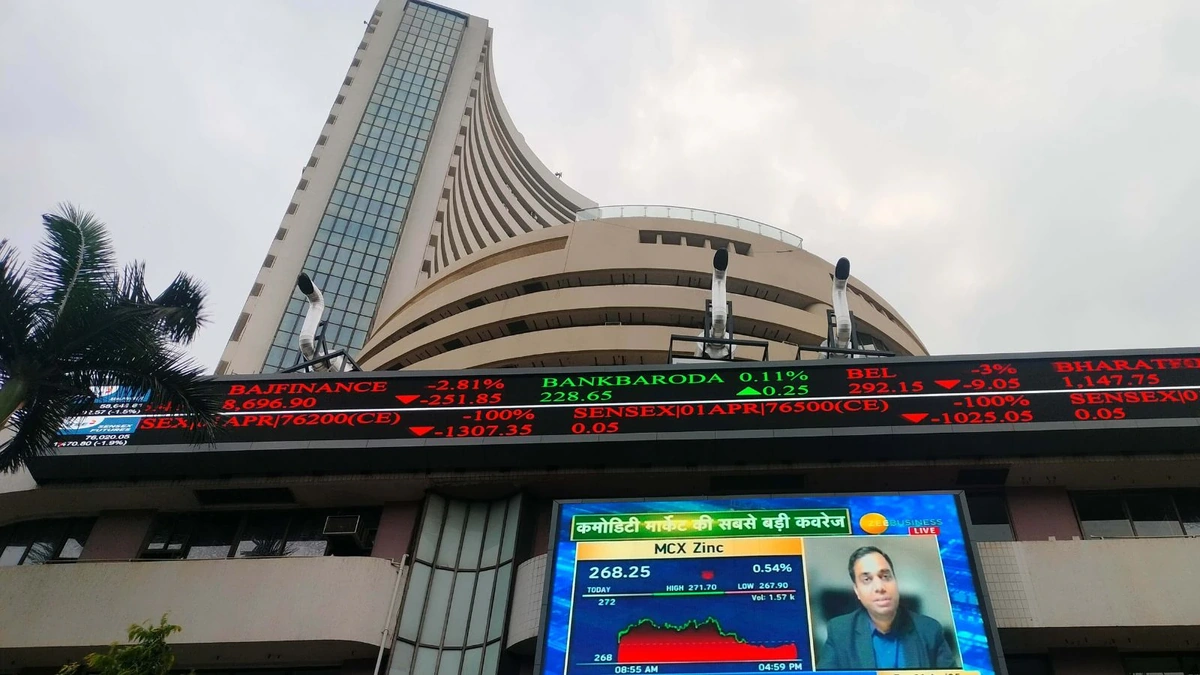Sensex Climbs 329 Points, Nifty Closes at 25,885
Okay, so the Sensex and Nifty are up. Big deal, right? Headlines flash across your screen, another day, another set of numbers. But let’s be honest – what does it really mean for you, sitting here in India, maybe juggling bills, thinking about your investments, or just trying to figure out if this whole market thing is something you should even pay attention to? That’s what we’re going to unpack today. Not just the ‘what,’ but the ‘why’ – and more importantly, what you can do about it.
Decoding the Rally | What’s Fueling the Fire?

So, 329 points on the Sensex . Nifty at 25,885. The market’s up, but why? Several factors are usually at play, and understanding them is key to predicting future trends (no guarantees, of course – this is the stock market, after all!). A primary driver is often positive global cues. If international markets are performing well, it tends to create a ripple effect. Think of it like a giant wave – it starts somewhere far away and eventually washes up on our shores. The Indian stock market is heavily influenced by foreign institutional investors (FIIs), so their investment decisions have a big impact. Also, strong domestic economic data, like good GDP numbers or positive manufacturing output, can boost investor confidence. Specific sectors also play a role; for instance, a surge in IT stocks or a rally in banking shares can significantly lift the overall market. In this particular instance, analysts are pointing to renewed optimism in the IT sector after some positive earnings reports from major players, and a slight cooling in inflation numbers, which has eased concerns about immediate interest rate hikes by the RBI. Understanding these factors is crucial for navigating the complexities of the Indian stock market .
The Ripple Effect | How This Impacts Your Investments
Here’s the thing: a rising Sensex doesn’t automatically translate to riches for everyone. The impact on your portfolio depends entirely on what you’re invested in. If you’re heavily invested in large-cap companies that mirror the Sensex , you’re likely seeing some gains. But if your portfolio is focused on mid-cap or small-cap stocks, or sectors that aren’t performing well, the impact might be minimal, or even negative. What fascinates me is how people react. Some see a rising market and immediately jump in, fearing they’ll miss out (FOMO, as the kids call it). Others get cautious, thinking it’s a bubble about to burst. The truth, as always, is somewhere in between. A smart strategy involves diversification – spreading your investments across different asset classes and sectors to mitigate risk. Regularly reviewing your portfolio and rebalancing it to align with your long-term financial goals is also essential. Don’t let market hype dictate your decisions; stick to your plan.
Sensex and Nifty | Gauging Market Sentiment
The Sensex and Nifty are more than just numbers; they’re barometers of market sentiment. They reflect the overall mood of investors – are they feeling optimistic or pessimistic? A significant climb, like the one we’re seeing now, often indicates a positive outlook. But it’s crucial to remember that these are aggregate indices; they don’t tell the whole story of every stock or sector. Furthermore, past performance is not indicative of future results. What I mean is: don’t assume that just because the market is up today, it will be up tomorrow. Market corrections are a natural part of the cycle; periods of growth are often followed by periods of consolidation or even decline. Savvy investors use dips in the market as opportunities to buy quality stocks at lower prices. They don’t panic sell when things get tough. As explained here, understanding these dynamics is key to long-term success in the market.
Practical Steps | Making the Most of Market Upswings
Alright, enough theory. Let’s get practical. How can you actually use this information to your advantage? First, take a good, hard look at your portfolio. Are your investments aligned with your risk tolerance and financial goals? If you’re unsure, consider consulting a financial advisor. Second, don’t be afraid to take profits. If you’ve seen significant gains in certain stocks, it might be a good time to sell a portion of your holdings and reallocate those funds to other areas. Third, stay informed, but avoid getting caught up in the daily noise. Focus on the long-term trends, not the short-term fluctuations. A common mistake I see people make is trying to time the market – buying low and selling high. It’s almost impossible to do consistently, and it’s a recipe for stress and potentially poor returns. Instead, focus on building a solid, diversified portfolio and sticking to your plan. For a clearer picture of upcoming investment opportunites, checkthis out .
Beyond the Numbers | The Human Element
Let’s be honest, the stock market can feel intimidating. It’s filled with jargon, complex charts, and seemingly unpredictable movements. But behind all the numbers and algorithms, there are real people – investors, traders, analysts – making decisions based on their own beliefs, fears, and hopes. The market reflects human psychology, and understanding that is just as important as understanding the economic fundamentals. Don’t let the fear of the unknown prevent you from participating in the market. Start small, educate yourself, and seek advice from trusted professionals. Remember, investing is a marathon, not a sprint. It’s about building wealth gradually over time, not getting rich overnight. And here’s a tip: don’t invest money you can’t afford to lose. It sounds obvious, but it’s a crucial rule that many people ignore. It’s also a good idea to keep up to date with information about market volatility , investment opportunities , risk management strategies , economic indicators , and portfolio diversification . Also, keeping up to date on the global market trends will help you become more informed.
FAQ
Frequently Asked Questions
What if I’m completely new to investing?
Start with the basics! Open a Demat account, research mutual funds, and consider a SIP (Systematic Investment Plan) for disciplined investing.
How much money do I need to start investing?
You can start with as little as ₹500 through SIPs in mutual funds.
What are some common investment mistakes to avoid?
Chasing quick profits, ignoring diversification, and not understanding your risk tolerance.
Is it safe to invest in the stock market?
All investments carry some level of risk. Understand the risks involved and invest according to your risk appetite.
How often should I review my portfolio?
At least once a quarter, or more frequently if there are significant market changes.
Ultimately, the Sensex and Nifty climbing are just data points. What matters is how you interpret them, how they fit into your overall financial picture, and what actions you take as a result. Don’t be a passive observer; be an active participant in your own financial future. Now, go forth and conquer… responsibly, of course!













